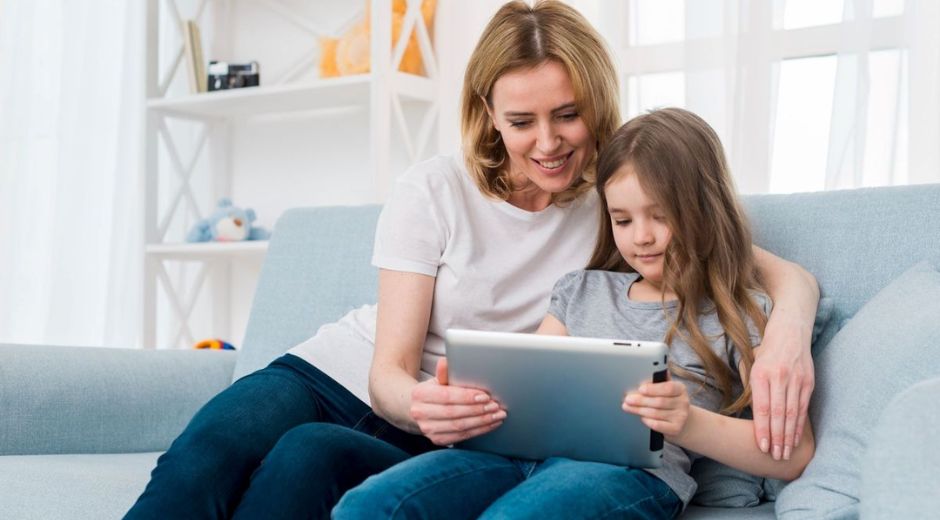Tech Parenting: Master Screen Time for Kids
Tech Parenting: Master Screen Time for Kids
In today’s digital age, children are growing up surrounded by screens—smartphones, tablets, computers, and televisions. While technology offers incredible learning opportunities, it also presents challenges for parents who want to ensure their children use devices safely and responsibly. By adopting thoughtful tech strategies, parents can help children balance screen time, foster creativity, and develop healthy habits that last a lifetime.
Understanding the Role of Technology in Childhood
Technology is more than entertainment; it’s a tool for learning, communication, and skill development. Educational apps, online courses, and interactive games can help children develop critical thinking, problem-solving abilities, and creativity. For example, platforms like studyskillup provide structured educational content that complements traditional learning methods.
However, unchecked screen use can lead to reduced physical activity, sleep disturbances, and challenges in social interactions. Establishing clear guidelines for device usage is essential to ensure that technology enhances rather than hinders growth.
Setting Screen Time Boundaries
One of the first steps in effective parenting is defining reasonable screen time limits. Experts often recommend:
Toddlers (2–5 years): Maximum of 1 hour per day of high-quality, educational content.
Children (6–12 years): Consistent routines with limited recreational screen time, ideally under 2 hours daily.
Teens (13+ years): Encourage self-regulation while monitoring usage, balancing schoolwork, social interaction, and physical activity.
Creating these boundaries doesn’t have to feel restrictive. You can explain the reasons behind limits and involve children in setting them. This fosters understanding and compliance while reducing power struggles.
Encouraging Productive Screen Use
Not all screen time is equal. Using it purposeful ways can make it a productive part of your child’s day. Encourage activities such as:
Educational apps and games that teach coding, math, or languages.
Online reading and interactive storytelling.
Creative pursuits like digital drawing, music composition, or video editing.
Websites like beautyupnest also offer engaging DIY and creative tutorials for children, blending tech with hands-on activities. Integrating these tools helps children develop skills that go beyond passive entertainment.
Co-Viewing and Digital Engagement
Active parental involvement enhances the benefits of screen time. Co-viewing, discussing content, or participating in digital activities together ensures children understand what they’re seeing and helps reinforce learning.
For example, parents can play educational games alongside their children, watch science documentaries together, or explore virtual museum tours. This approach strengthens family bonds while guiding children to make safe, informed choices in their interactions.
Building a Positive Environment
Creating a home environment that balances tech use with offline activities is essential. Encourage routines that include:
Outdoor play and physical exercise.
Reading, drawing, or imaginative play.
Family meals without screens to promote communication.
Parents can also designate “tech-free zones,” such as bedrooms or dining areas, to help children separate leisure screen time from rest and social interactions.
Internal resources like coolparentingtips provide practical tips and strategies for managing at home, offering structured routines and creative alternatives to passive screen consumption.
Digital Literacy and Safety
Equipping children with digital literacy skills is just as important as managing screen time. Teach children to:
Identify reliable online sources.
Protect personal information.
Recognize inappropriate content and report it.
Practice respectful communication in online spaces.
By fostering digital literacy, parents empower children to navigate the world confidently and safely. Websites such as gamingnewshead provide insights into safe gaming environments and trending online platforms, helping parents stay informed about what children encounter digitally.
Modeling Healthy Habits
Children learn by example. Parents who model balanced tech use, take breaks from devices, and prioritize face-to-face interaction demonstrate positive behaviors that children are likely to adopt. Consider family routines where devices are limited during meals, conversations, or outdoor activities.
Incorporating Tech Into Education
Rather than viewing all screen time as passive, integrating tech into learning can be highly beneficial. Educational videos, interactive lessons, and virtual workshops allow children to explore topics in ways that traditional classroom settings cannot always provide.
Platforms like studyskillup and other online learning resources offer structured lessons that make screen time productive and intellectually stimulating. This approach ensures that tech contributes to growth rather than simply entertainment.
Encouraging Creativity and Innovation
Technology can be a springboard for creativity. Encourage children to:
Create digital art, animations, or videos.
Write blogs or short stories online.
Experiment with coding and programming projects.
By fostering creative applications, parents help children develop skills that extend beyond the screen, preparing them for a future where digital literacy is crucial.
Balancing Tech and Offline Play
While tech offers many benefits, it should complement, not replace, offline activities. Outdoor play, sports, reading, and hands-on crafts are vital for holistic development. Children who spend time away from screens improve social skills, physical health, and emotional resilience.
Parents can also introduce screen-related projects that involve offline components, such as building a model, creating a science experiment, or producing a short film using their device. This integration keeps tech purposeful and balanced.
Conclusion
Mastering tech parenting is about balance, guidance, and intentionality. By setting boundaries, promoting productive usage, teaching digital literacy, and modeling healthy habits, parents can ensure that technology serves as a valuable tool rather than a source of stress or distraction.
With structured routines, co-engagement, and thoughtful integration of screen-based activities, children can enjoy the benefits of the digital age while maintaining their creativity, social skills, and emotional well-being. Internal guidance from coolparentingtips and external resources like gamingnewshead, studyskillup, and beautyupnest help parents stay informed and make empowered decisions about their family’s tech use.
Ultimately, balancing screen time, encouraging purposeful digital activities, and fostering offline engagement allows children to thrive in a world where tech is ever-present, turning potential challenges into opportunities for learning, creativity, and growth.
Learn Bond Bloom

Calm Corner Setup for Emotional Regulation
Calm Corner Setup for Emotional Regulation

Big Feelings Tools Kids Can Learn Fast
Big Feelings Tools Kids Can Learn Fast

Picky Eating Solutions That Feel Simple
Picky Eating Solutions That Feel Simple

Morning Routine Ideas for Smoother Days
Morning Routine Ideas for Smoother Days













